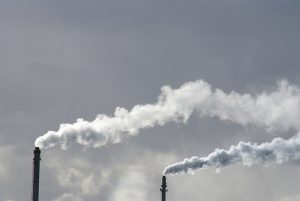Two and a half years after China selected seven provinces and cities to be emissions-trading pilots, a milestone on the way to a national system was reached last month when the final pilot, in the western Chinese city of Chongqing, started operation.
The deadline was ambitious, and the systems have encountered stumbling blocks on the way. But China has made remarkable progress adapting emissions trading to the Chinese context. Together, the systems already form the world’s largest carbon market after the EU. As they progress, they represent a real step forward in the global effort to limit greenhouse-gas emissions, foreshadowing more ambitious climate policy and possibly even an absolute cap on China’s fast growing emissions.
There are a number of reasons why China has decided to take this step toward environmental markets. As the world’s largest emitter, China is gradually taking on the responsibility that comes with its growing role of a major world power. And as the world’s largest energy user, it increasingly confronts concerns of energy security, efficiency and competitiveness. The country is also approaching its environmental limits, illustrated by the levels of air pollution in its major cities.
All this, combined with its mixed experiences with central planning, price fixing and command and control policies, including having local authorities close down factories in a last-ditch effort to hit targets under the 11th Five-Year Plan, have led Chinese policymakers to move towards an alternative market approach in order to control greenhouse-gas emissions.
China’s present experience with carbon markets comes mainly from its success with the Clean Development Mechanism (CDM), a global offset market set up as part of international efforts to curb greenhouse-gas emissions, in which it became a world leader. CDM projects in China introduced the private sector to the idea that emission reduction could bring financial rewards. Along with the market, a community of project developers, financial intermediaries, and verifiers emerged to provide some of the basic capacity for emissions trading in China today.
As the international CDM market collapsed, the creation of domestic sources of demand to support what otherwise may have been stranded projects became another motivation for policymakers to consider domestic emissions trading with credits called “Chinese Certified Emission Reductions” (CCERs) as offsets.
Learning curve
When China’s top economic planning body, the National Development and Reform Commission (NDRC), announced the regions that would pilot emissions trading in China in October 2011, it did so with a very ambitious schedule not only for policymakers in the pilots, but also for the private sector. Commodity trading has expanded rapidly over the past few years, but until recently prices for many resources were regulated by the government. While some companies were involved with the CDM, getting a broad spectrum of Chinese companies to understand, participate, comply with, and possibly even benefit from an emissions-trading system was always going to be a challenge.
One way to see the pilot schemes is not as a long term project in and of themselves, but rather as a way to experiment with various emissions trading design elements while helping companies get used to the instrument before a national programme is rolled out some time during the 13th Five-Year Plan period (2016-2020).
Although the regions selected to serve as emissions-trading pilots are all relatively economically advanced, their economic profiles still differ widely. The central government provided only a few general design guidelines to those in charge of the pilots, leaving them with a high degree of flexibility to come up with a system that best suits their contexts.
Commonalities among the pilots include their focus on CO2 emissions, allocation rules giving most allowances out for free, and the acceptance of CCERs as offsets. All have reserved the prerogative to introduce market stability measures and adjust their overall caps and allowance determinations. These are reactions to what the policymakers perceive to be challenges, such as over allocation in the EU’s emission-trading system, where an over-supply of credits saw the price of carbon plummet.
Design elements where the pilots were free to experiment include their pilot’s specific caps, scope and coverage, allocation methods, and the kinds of other market participants allowed to trade on the market. The results reflect the diversity of the regions; in addition to the energy and industry sectors, Beijing for example included service sector companies, while Shanghai included domestic commercial aviation. The number of participants in the pilots ranges from just over 100 in Tianjin to more than 800 companies and buildings in Shenzhen (detailed up-to-date information on the design of the pilot systems can be found on the interactive map available at icapcarbonaction.com).
The various design features have resulted in divergent price trends, ranging from around 20 yuan per ton of carbon dioxide in Hubei to over 70 yuan in Shenzhen. Prices however are only part of the story; trading volumes are generally low as many companies are reticent about getting into the market. Other issues include the somewhat opaque policymaking process related to the short implementation deadline, a lack of reliable emissions data, inadequate capacity to integrate carbon trading into business models, and restrictions with regard to the development of derivatives and futures markets.
There have also been multiple cases of companies submitting inaccurate emissions reports and even out-right refusing to participate. All systems have rules to penalise non-compliant companies, but it remains to be seen how policymakers will go about enforcing established regulations.
What next?
The completion of the first compliance cycle in the coming months will give policymakers, companies and observers the opportunity to take stock of this first exercise with emissions trading in China. Incoming data may help to paint a clearer picture of the emissions profiles of the systems. Moving forward, the pilots will continue to tinker with and refine their market designs. Although other regions not originally designated as pilots have expressed interest in emissions trading, it is unlikely that further pilots will be allowed. The prospect of joining the existing pilots has been raised as a possibility, though the NDRC is already working on plans for a nationwide system that may be introduced as early as 2017. Large emitters outside the pilots have been notified that they will be required to report their emissions.
Laying the legal foundation and creating the administrative capacity for a national system are important next steps. Factors to watch include which elements of the existing pilots will be integrated into the national scheme, especially as the design approaches of the current pilots are likely to prove otherwise incompatible. The attempt to create an effective market for a country as large and diverse as China is monumental, the ambition to tackle it will be critical. If it is successful, not only will China be cleaner, more efficient and competitive, it will also send a signal to the world about how to address the global climate challenge.





